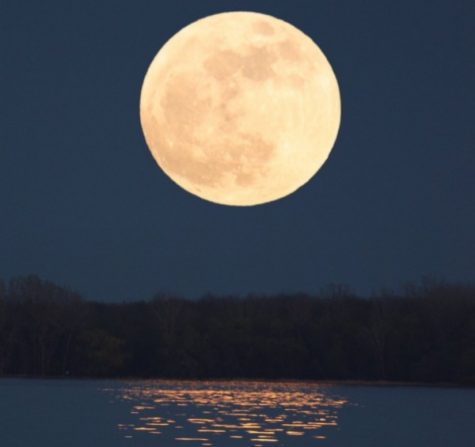2016’s Lunar Surprise
Known as a “supermoon,” this full moon will happen just six days after the U.S. presidential election.
Is it a bird? Is it a plane? No! It’s a supermoon!
On the night of Sunday, November 13th, to the morning of Monday, November 14th, a moon much bigger and brighter than normal should appear. With any luck, people will find themselves outside staring at the unique astronomical super hero known as a supermoon.

The beauty of the full moon rising, like this “supermoon” in May 2012, is one of the most stunning sky-watching sights not to be missed.
So, what is a supermoon?
A supermoon is when the Moon becomes full while it’s closest to Earth on its elliptical orbit. The Moon at its closest point is about 221,208 miles away from Earth, while its furthest point is about 258,898 miles. Monday’s Moon will just graze that closest point by 316 miles. These supermoons tend to be around 14% to 30% brighter than your average full moon because of its size and proximity.
According to NASA, November 14th’s supermoon will be only two hours from its closest point (221,524 miles), making it the biggest and brightest supermoon of the 21st century. In fact, the last supermoon that came this close to earth was on January 26, 1948.
December 14th’s supermoon is special for a different reason. It will be so big and bright that it will hide the Geminid meteor shower happening at the same time. The supermoons will also hide surrounding stars along with the meteor shower.
So, when should you go see this supermoon?
According to Earthsky.org—a popular site for astronomical sightings–the Moon will be its closest to Earth on November 14th at 7:52 a.m. CST, but most should be able to see it anytime during the night on November 13th.
The next supermoon this close will be able to be seen on November 25th, 2034–over 28 years from now! So get outside on November 13 and 14 to see that supermoon swoop to the rescue and save the night sky.







